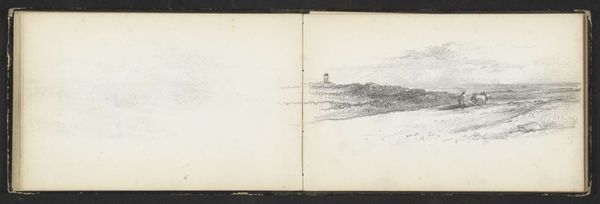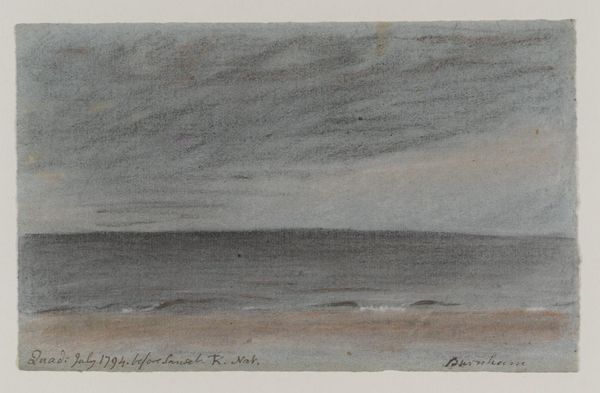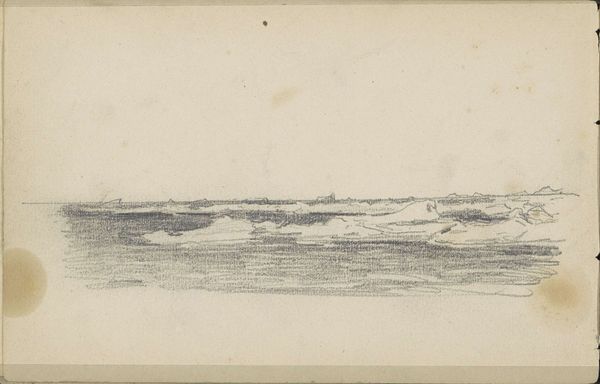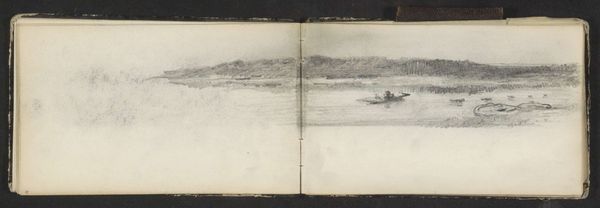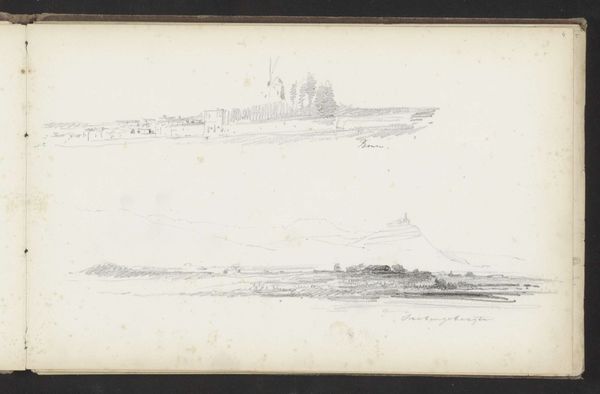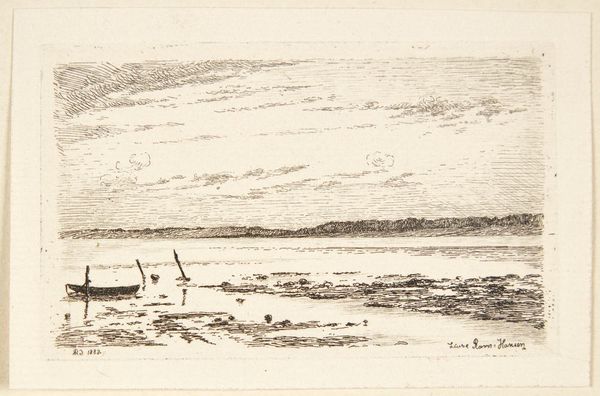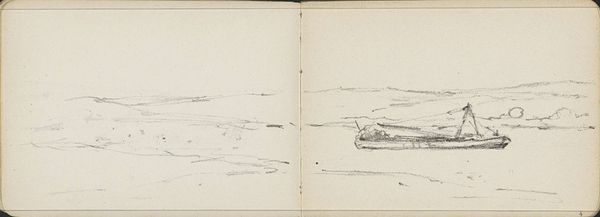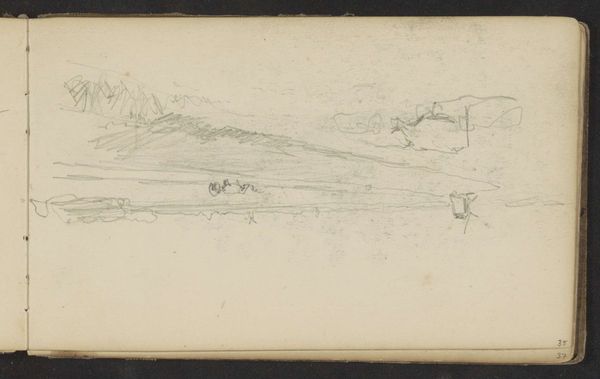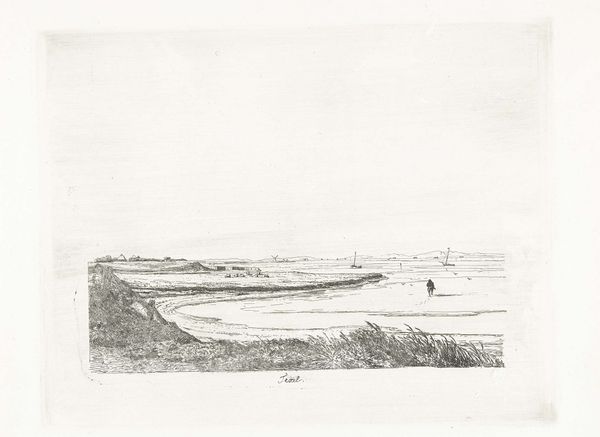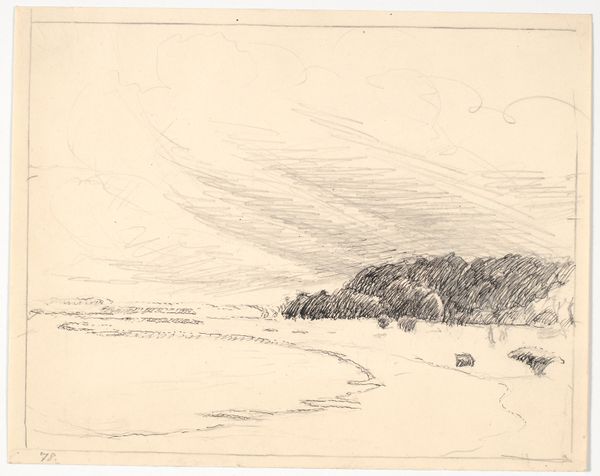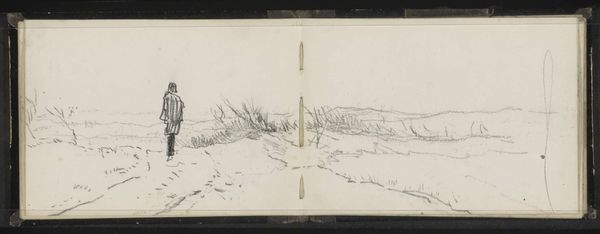
drawing, pencil
#
drawing
#
impressionism
#
landscape
#
coloured pencil
#
pencil
Copyright: Rijks Museum: Open Domain
Curator: We’re now standing before Maria Vos’s, "Landschap bij Doorn," created between 1873 and 1877. This drawing, rendered in pencil and colored pencil, currently resides here at the Rijksmuseum. What strikes you initially? Editor: The starkness. It's like a landscape holding its breath. The dichotomy of the densely worked right page and almost entirely blank left gives this overwhelming feeling of potential energy held in place. I wonder about the intent to divide the visual information between these two pages. Curator: Considering the context of Vos's practice, perhaps we should delve into how landscape art during this period was deployed to affirm particular cultural identities, reinforcing notions of national territory, land ownership and, indeed, what it meant to belong, to witness belonging, or not to. We might read it, therefore, as an attempt by her to lay claim to this sense of identity and history by taking it in sketch, transforming it into something newly possessed and personal. Editor: That’s a very interesting idea. I was also thinking about gender and access at this period, what the practice of walking and landscape representation meant to women like Vos. Her gender certainly complicates our view, don't you think? What does this landscape, sketched in pencil, offer to counter narratives of a burgeoning bourgeoisie entitlement over these vistas? The choice of this soft, vulnerable medium rather than, say, oil paints, feels vital. Curator: Absolutely. And while the impressionistic style employed here suggests an openness to experimentation and modernity, Vos seems also to simultaneously look toward convention and to what might confirm the existing visual vocabularies expected of female artists exhibiting at this moment in Dutch art history. She had to secure patronage and affirmation in specific institutions. Editor: So it becomes less about capturing a specific location and more about staking claim to artistic validation? Curator: Perhaps both are interconnected. The location serves as a means through which Vos navigates societal expectations and the challenges she must overcome to emerge into an overwhelmingly masculine terrain of landscape production and reception. Editor: Thinking about it this way gives a somber complexity to this seemingly simple landscape. Curator: Indeed. There's so much more depth beneath the surface when we acknowledge these overlapping histories and contexts.
Comments
No comments
Be the first to comment and join the conversation on the ultimate creative platform.
